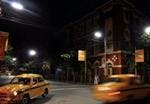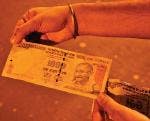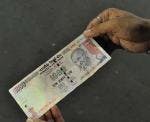A key driver of Indian government LED policy is the need to significantly enhance energy efficiency across all sectors of the economy, in order to decouple growth in energy demand from economic growth. Otherwise, a very expensive three- or four-fold increase in primary energy production will be required by 2031-32 to sustain economic growth of 8-9% annually. India wants to sustain this rate of growth in order to eradicate poverty and improve living standards.
LED lighting report
The Core Committee’s report, which was drafted largely the Ministry’s Bureau of Energy Efficiency (BEE), highlighted the potential for LEDs to reduce electricity demand for lighting, which consumes 22-25% of the national load. Peak demand is a particular worry, as its rapid growth tends to increase the need for more power plants to supply the necessary headroom load.
The report singled out residential electricity demand as a significant potential market for LED A-lamps. There are 400 million lamps in Indian households, mostly incandescent bulbs, consuming 70 million MWh annually. The penetration of LEDs in this sector could reduce household electricity use by 30%. Street-lighting applications and commercial buildings are other areas where LEDs also need to be promoted.
The Committee’s report identified the key barriers to the market penetration of LEDs in India, as follows:
• Limited product availability in India;
• High initial cost, even with carbon finance assisting;
• Absence of national technical standards for LEDs, leading to the importation of sub-standard LED devices;
• Lack of testing protocols and laboratories;
• Lack of incentives such as demand or fiscal measures to attract major LED firms to manufacture in India.
The aim of the new LED aggregate-demand policy will be to attract leading LED manufacturers to India and to rapidly reduce product costs. The government has established the Central Institutional Mechanism (CIM) with representation of all the key ministries and regulatory bodies to implement the new aggregate-demand policy and other measures recommended by the Core Committee’s report. Details are being work out.
Pilot trials of LED street lights
Meanwhile, since 2009 the BEE has been providing grants to Indian municipalities to undertake pilot trials of LED street lamps. Public lighting in India requires approximately 4400 MW of connected load, so targeting street lighting makes sense, if 50-70% energy reduction can be achieved through installation of LEDs. To date, 13 LED projects have been completed in cities in Arunachal Pradesh, Assam, Maharashtra and Nagaland. Anecdotal evidence suggests that results of these pilots have been mixed, largely because of lack of knowledge about how to go about procuring quality LED products at the municipal level. Reportedly, there have been some product failures.
The Kolkata trial has advanced the furthest. Installation of the first group of 273 Philips Lumec luminaires took place in October 2010, with 180W and 150W LED models replacing the existing 440W and 250W high-pressure sodium (HPS) lamps, respectively. Monitoring began in January 2011.
Results to date have been encouraging. Only one luminaire has failed to date, due to a faulty driver. The LED luminaires are meeting India’s IS 1944 Group A1 roadway-lighting standard, which mandates an average illuminance of 30 lux. The LED luminaires are also providing more illuminance than the baseline HPS luminaires, while achieving nominal savings ranging from 40% to 59% for replacement of the two HPS wattage types. A full year of monthly data is needed to assess lumen maintenance.
Meanwhile, consumer feedback has been extremely positive. A professional public survey conducted in July 2011 interviewed 85 drivers, pedestrians, shopkeepers and park visitors. More than 90% of the driver respondents said the LEDs improved visibility on the road, and more than 70% of the pedestrians interviewed had the same view. In terms of road safety, 70% of drivers felt safer, while 40% of pedestrians felt safer (40% of respondents felt there was no change). A majority of respondents favored an LED rollout across Kolkata’s busy streets, the positive responses ranging from 75% of shopkeepers to 90% of drivers.
The positive trial results and consumer feedback have convinced Kolkata Municipal Corporation (KMC) officials to scale up. KMC now plans to install 15,000 LED streetlights through the next phase of the Kolkata Environment Improvement Project (KEIP). This project, funded by the Asian Development Bank, plans to go to tender in January 2012.
As central-government LED policies evolve, municipal trials like the one in Kolkata are lending practical experience to national policymakers as they decide what new technical resources, standards, and institutions are needed to enable India to join Japan, China, Taiwan, and Korea at the forefront of the high-brightness LED revolution in Asia.








